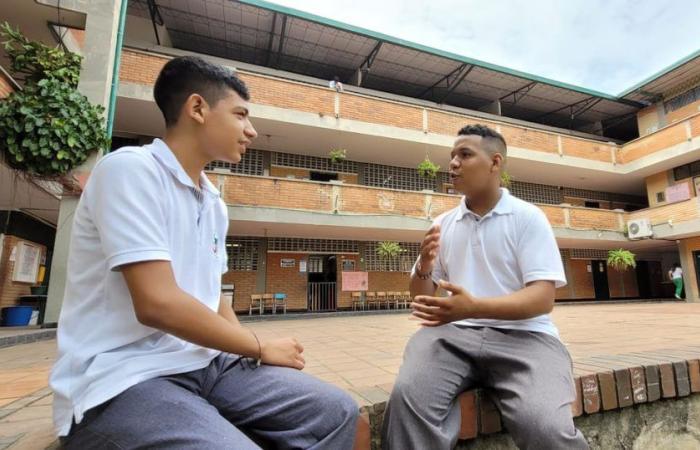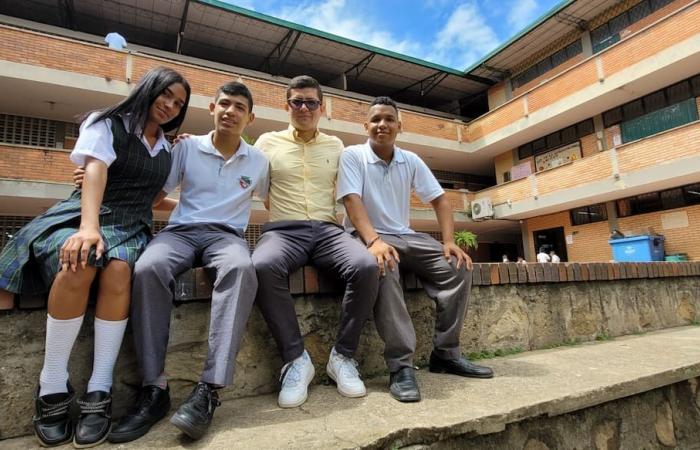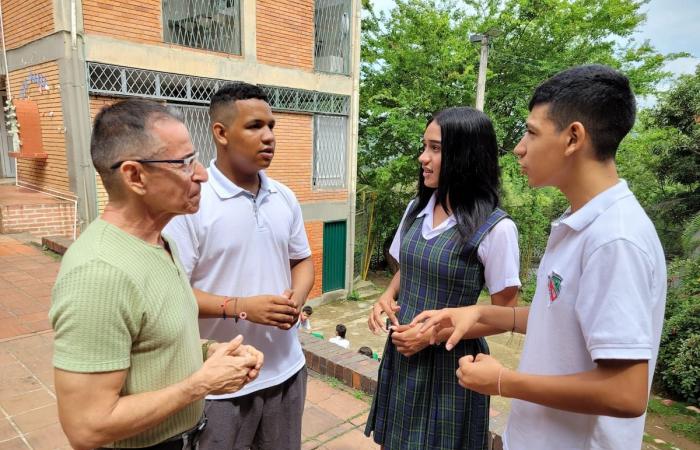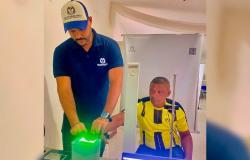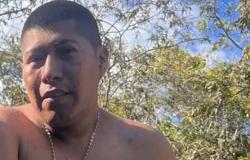Since 2018, this school opened its doors to migrant students, mainly from Venezuela, who are looking not only for an education, but also for an opportunity to restart their lives.
In Comuna 4 of Bucaramanga, between the 12 de Octubre and Santander neighborhoods, is the San Francisco de Asís Educational Institution. This educational center, recognized for its commitment to diversity and inclusion, welcomes a student community where more than 50% are migrantss, returnees, and in many cases, families made up of siblings and cousins who share both the classroom and their life stories.
“The integration of these students not only benefits them; has driven our Institution to improve its educational coverage and quality,” as highlighted by Gerardo Andrés Barbosa, rector of the Institution. “We have become a welcoming place that does not require prior certifications. We take care of the entire enrollment process, ensuring that each child can exercise their right to education,” adds Barbosa.
With a current registration of around 755 students, The San Francisco de Asís Educational Institution has implemented innovative pedagogical processes to promote genuine and meaningful integration.
Collaboration with Migración Colombia has been key for students to obtain their Temporary Protection Permit (PPT). In addition, a strategic alliance with the Bucaramanga Intégrate Center has allowed them to facilitate access to essential services for migrant families.
“As an institution, our mission is to provide equal rights without any discrimination, regardless of place of origin or birth. We seek to guarantee this for all students, whether they are Colombian or Venezuelan,” commented José Darío Durán, school counselor.
Integration at San Francisco de Asís is not limited to simple inclusion in the classroom, it has also developed educational initiatives such as the “My Panita, My Friend” workshops, in collaboration with the United States Agency for International Development (USAID). . These workshops were fundamental so that students could explore and recognize their potential through the knowledge shared by journalists from Vanguard. “These classes were valuable, they helped us put ourselves in each other’s shoes and be more empathetic with the migrant population who, like us, come with dreams and aspirations,” Durán explained.
Training as a tool to integrate
And each day that passes is a testimony of how education can be a powerful tool for social cohesion. Students don’t just learn math, science, or language; It is also committed to building bridges of dialogue and solidarity. In each classroom, stories of resilience and hope are woven, where each child and adolescent, regardless of their origin, finds a space to grow and dream.
This educational institution has become an example of integration in Bucaramanga, with a migrant population that reaches 59,570, showing how solidarity and mutual support can transform lives. An emblematic case is that of Alejandro Palacio, a student with disabilities who managed to obtain his wheelchair thanks to raffles organized by his classmates.
Even activities such as cultural bazaars that celebrate Venezuelan and Colombian gastronomy, are essential to strengthen cohesion. “These events are very significant for me,” highlights Darielis Castro, representative of the Institution. “Listening to the anthem of my beloved Venezuela during the symbolic acts fills me with emotion and transports me to my hometown, Caracas,” says this young woman.

Daily coexistence in the institution is characterized by mutual respect that has completely eliminated any trace of xenophobia. “In recent years, we have not had any cases of xenophobia. “The students recognize each other as equals, which is fundamental,” said Durán.
Yuscarlys Pérez, mother of three children who attend the institution, highlights the importance of this welcoming environment. “We arrived in Bucaramanga six years ago, my children were received with open arms in San Francisco de Asís, and the experience has been excellent, the inclusion and respect they have found here are reflected in their academic performance,” Pérez pointed out.
However, the school’s challenge goes beyond inclusion and individual actions, since the reality in the country’s educational institutions shows challenges in the training and awareness of their communities against xenophobia. “The lack of adequate training on diversity and human rights issues contributes to an environment in which prejudice and discrimination can thrive, schools must develop strategies that not only sanction xenophobic behavior, but also educate and prevent such attitudes from the root,” adds the counselor.
Saint Francis of Assisi has responded to these challenges with the implementation of educational programs and practices that promote empathy. “Close collaboration with parents and raising awareness about xenophobia must be a joint task that transcends the walls of the classroom, involving all social actors in creating a safe and respectful environment for all students,” concludes the rector.

